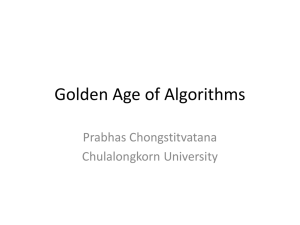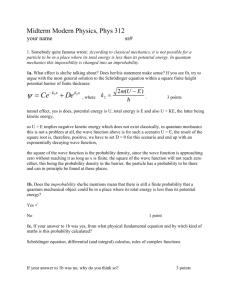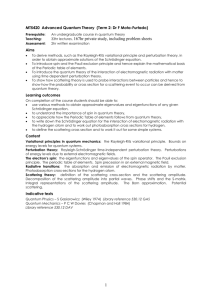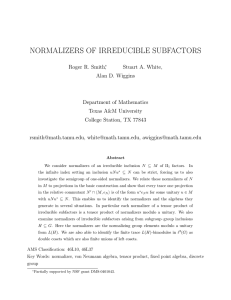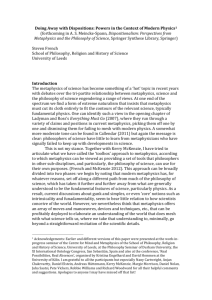Complementarity, finite quantum kinematics and their symmetries
advertisement
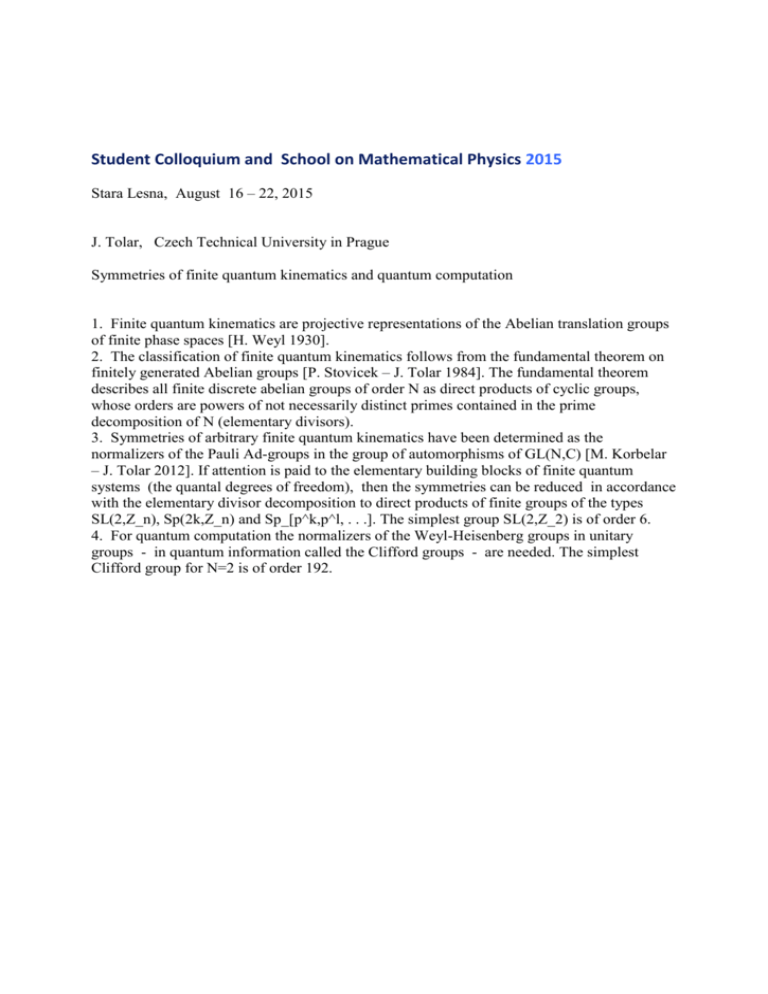
Student Colloquium and School on Mathematical Physics 2015 Stara Lesna, August 16 – 22, 2015 J. Tolar, Czech Technical University in Prague Symmetries of finite quantum kinematics and quantum computation 1. Finite quantum kinematics are projective representations of the Abelian translation groups of finite phase spaces [H. Weyl 1930]. 2. The classification of finite quantum kinematics follows from the fundamental theorem on finitely generated Abelian groups [P. Stovicek – J. Tolar 1984]. The fundamental theorem describes all finite discrete abelian groups of order N as direct products of cyclic groups, whose orders are powers of not necessarily distinct primes contained in the prime decomposition of N (elementary divisors). 3. Symmetries of arbitrary finite quantum kinematics have been determined as the normalizers of the Pauli Ad-groups in the group of automorphisms of GL(N,C) [M. Korbelar – J. Tolar 2012]. If attention is paid to the elementary building blocks of finite quantum systems (the quantal degrees of freedom), then the symmetries can be reduced in accordance with the elementary divisor decomposition to direct products of finite groups of the types SL(2,Z_n), Sp(2k,Z_n) and Sp_[p^k,p^l, . . .]. The simplest group SL(2,Z_2) is of order 6. 4. For quantum computation the normalizers of the Weyl-Heisenberg groups in unitary groups - in quantum information called the Clifford groups - are needed. The simplest Clifford group for N=2 is of order 192.





